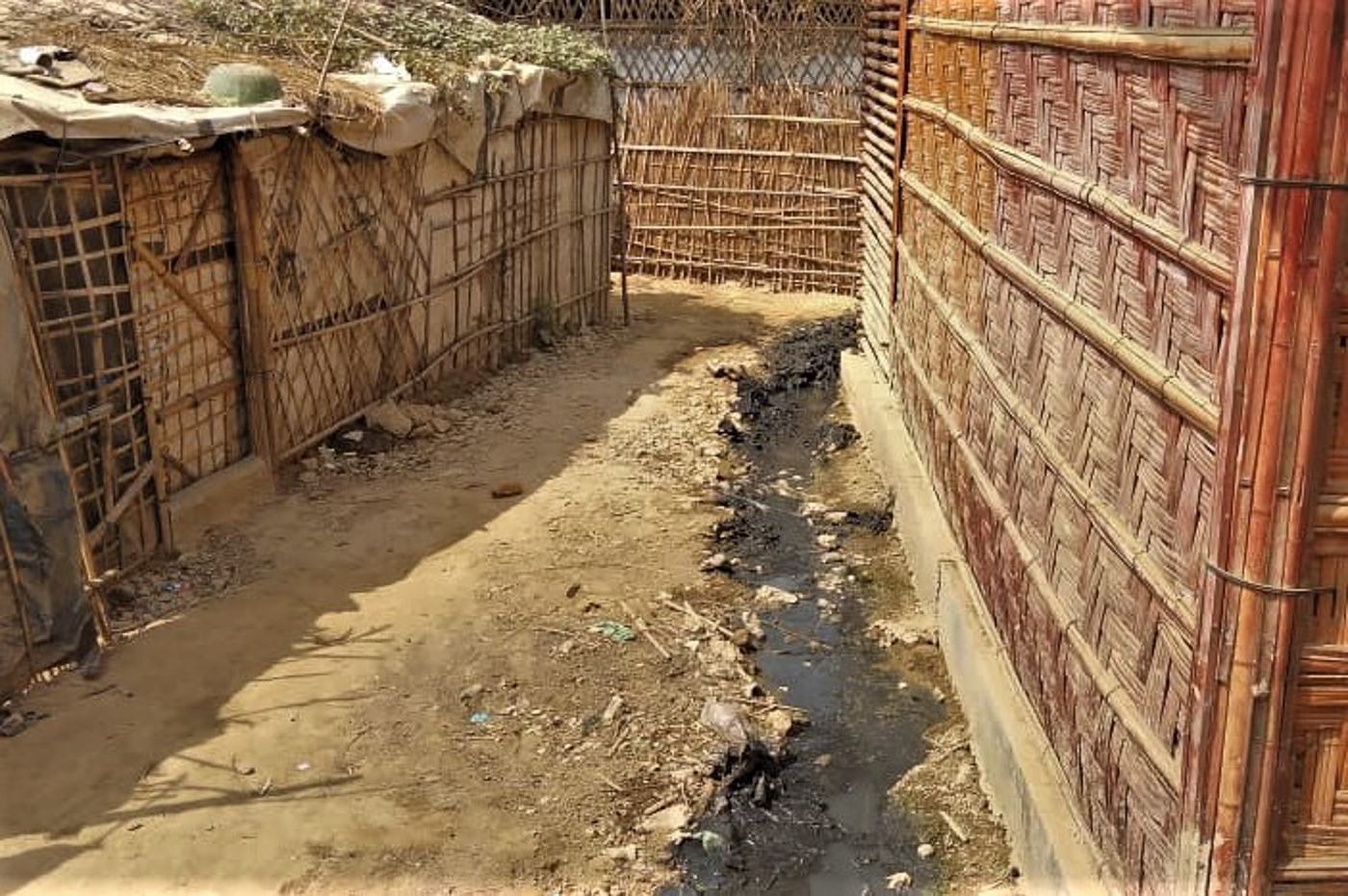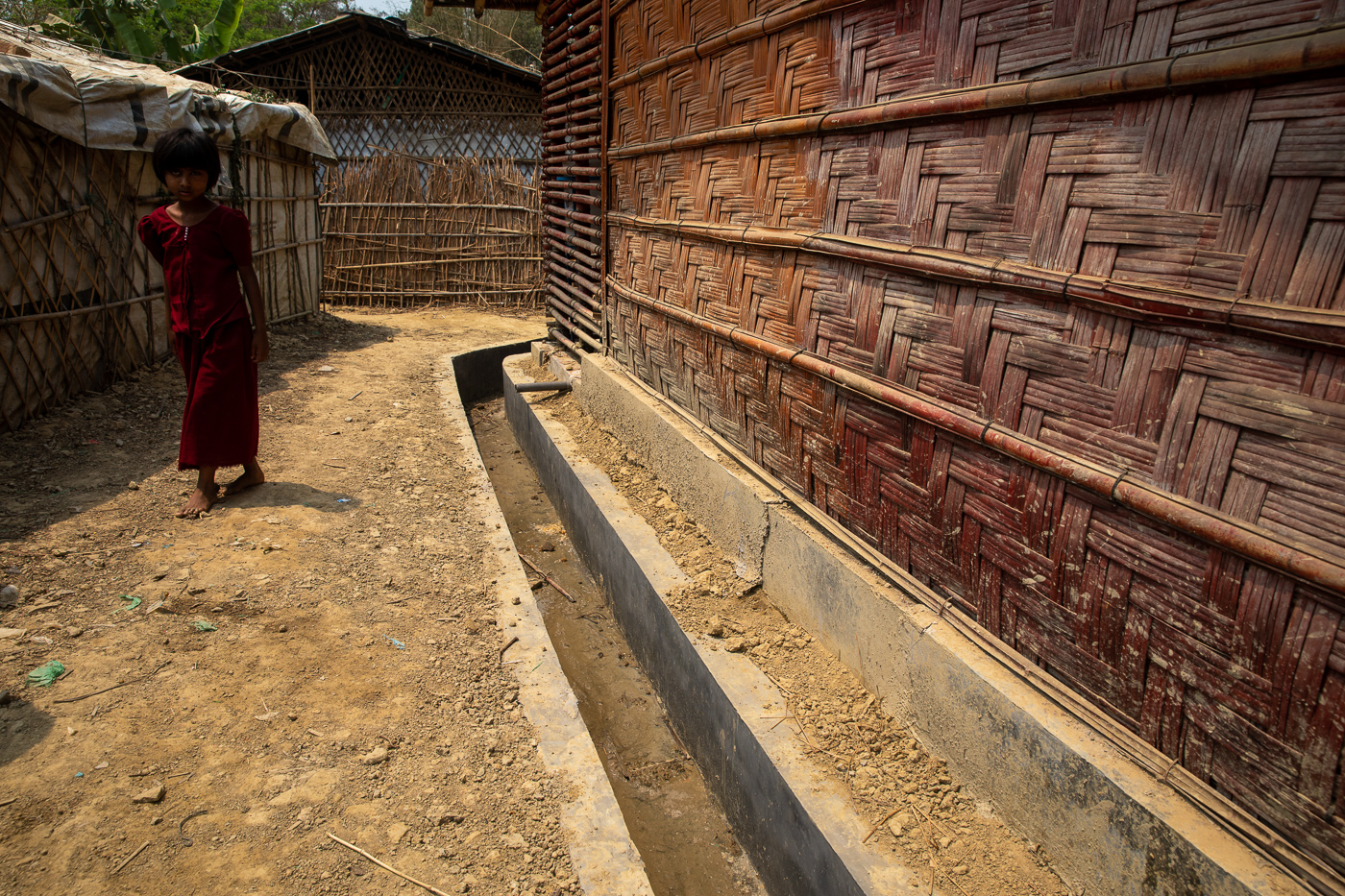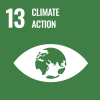“Our ethnic group – the Chakma – moved here 60 to 70 years ago. Later, the Rohingyas came and we learned to live together like brothers,” Nichabong recalls.
One of the camp’s long-standing residents, host community member Nichabong and his family, have been living for decades in what is known today as Camp 22.
Multiple camps in Cox’s Bazar are marked by a mixed demographic comprising both host community members and Rohingya refugees who settled there during the 2017 influx or even prior. The Chakma host community in Camp 22 in Cox’s Bazar has been welcoming refugees for ages and to this day maintains close ties with its neighbors.
When Rohingya families started settling in the area in 2017, infrastructure, facilities and services were lacking. “There were no drains, roads or shelters,” remembers Sokhina, a Rohingya refugee who fled Myanmar at that time. Residents had to adapt and improvise until, together with the community, the International Organization for Migration (IOM) began implementing Quick Impact Projects (QIPs).


Before the construction works, people with disabilities struggled to get around the camp. Photo: IOM/Mashrif Abdullah Al
In 2018, as part of its Women’s Participation Project (WPP), IOM introduced Women Committees in several camps with the aim of boosting women’s engagement and livelihoods. Women’s representation in camp governance and their meaningful participation in the decision-making process in camp settings has been recognized as a key factor for mitigating protection risks and economic instability.
To further strengthen ties between Rohingya refugees and host community members, Women Committees in the Teknaf district comprise members from both communities. These joint committees give members the opportunity to discuss matters of common importance and address them collectively.
Building on its successful WPP initiative, IOM selected several projects to address the immediate needs of refugees and host communities and help them generate an income. Nichabong, Sokhina and their communities all identified key communal infrastructure that needed repairing, such as staircases, pathways and drainage systems.
Thanks to the new staircase, community members are now able to safely access vital water points. Photo: IOM/Mashrif Abdullah Al
These general site improvement works focus on enhancing the quality of life and reducing risks related to drainage, access and stabilization works. To ensure the overall safety of the affected population, areas at risk of natural hazards such as flooding and landslides are identified through regular Disaster Risk Reduction assessments.
Through a consultative process with the community, 11 Cash-for-Work (CfW) projects were identified. A total of 1,000 Rohingya refugees and host community members participated in the works that ensued.
“When the construction work was going on, we also contributed and even earned some money,” Nichabong observes.


The wall and staircase built in Camp 22 will help families move around with ease. Photo: IOM/Mashrif Abdullah Al
The pond in Camp 24 has been used by refugees and host community members for domestic purposes for years. “When we arrived here, there was no fence around the pond,” Rohingya refugee Fatema says. Two child drownings in connection to the pond have been reported last year alone.
Several other drowning incidents have been reported in refugee camps in Cox’s Bazar due to lack of fences near water bodies. According to recent reports, childhood drowning is critical in Bangladesh, where drowning has been identified as the leading cause of death among children aged 1–17 years.
Furthermore, due to COVID-19 pandemic and its subsequent restrictions, thousands of children saw themselves out of school and with plenty of time to fill, often by playing in ponds or canals. With that in mind, the community quickly identified the need for a fence and landing to continue safely using the water, especially given the increase in water levels during the rainy season.
“The children can now play safely and we are not stressed anymore,” Fatema notes.
Thanks to the new fence and landing, parents and children can now safely access the pond. Photo: IOM/Mashrif Abdullah Al
Among the other key infrastructure projects implemented was a 25-meter geo bag (sand sack) and bamboo staircase installed in a hilly camp area where movement during monsoon season is cumbersome. “When the rainy season comes, we have problems in our village,” Nichabong says.
With Chakma community leaders at the top of this hill, this popular path was in dire need of an upgrade.
A total of 16 refugees and community members worked on setting up the staircase, while more than 100 people are now benefitting from its installation. “We can now easily carry water up and down the stairs and visit our neighbours,” Nichabong mentions.
The objective is to holistically upgrade the settlements and their immediate surroundings, with the community’s active participation throughout all the phases – from planning to construction and maintenance – to create safe, dignified and resilient living conditions. To ease the process and promote a community-driven approach, the teams increased the number of site improvement works identified by the community through various referral mechanisms.


Before building the brick drain, community members had to endure waterlogging and bad smells. Photo: IOM/Mashrif Abdullah Al
The infrastructure selection was tied to a thorough vulnerability assessment conducted by IOM teams in close consultation with the community. From the decision-making process to Cash-for-Work activities, the interventions ensured and promoted the participation of women, men, extremely vulnerable individuals and people with disabilities, from both refugee and host communities.
“Rohingyas and villagers are working well together,” Sokhina says.
Vulnerable individuals such as people with disabilities have been particularly affected by poor infrastructure. IOM and its implementing partners are working closely with other protection actors on the ground to integrate other activities, such as relocations, feedback mechanisms, and emergency response activities.
The roads and staircase are now accessible by pregnant women, elderly people and persons with disabilities, who previously depended on their close ones to get around the camp.
“We had to help them walk or carry them,” Sokhina recalls. “We don’t need to do that anymore.”
The Quick Impact Projects implemented across six camps in Cox’s Bazar were possible thanks to the support of the Foreign, Commonwealth and Development Office (FCDO).
This story was written by Monica Chiriac, IOM’s Public Information Officer in Cox’s Bazar, Tel: +880 1880 084 048, Email: mchiriac@iom.int.


